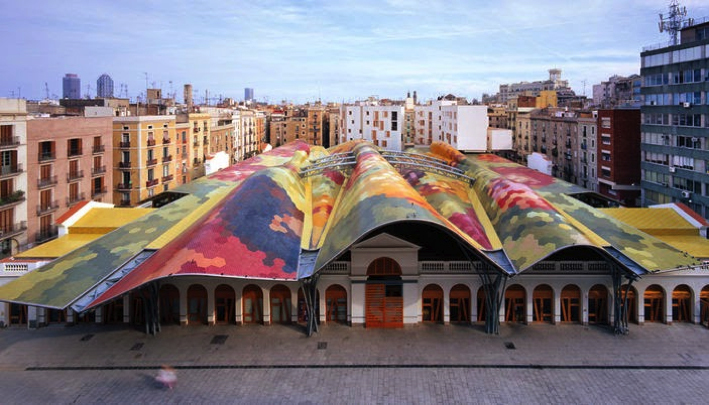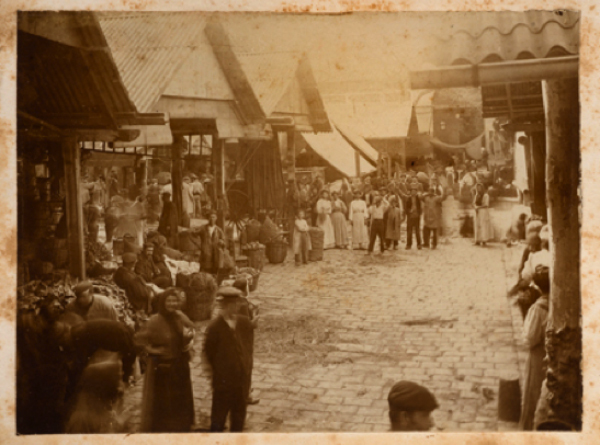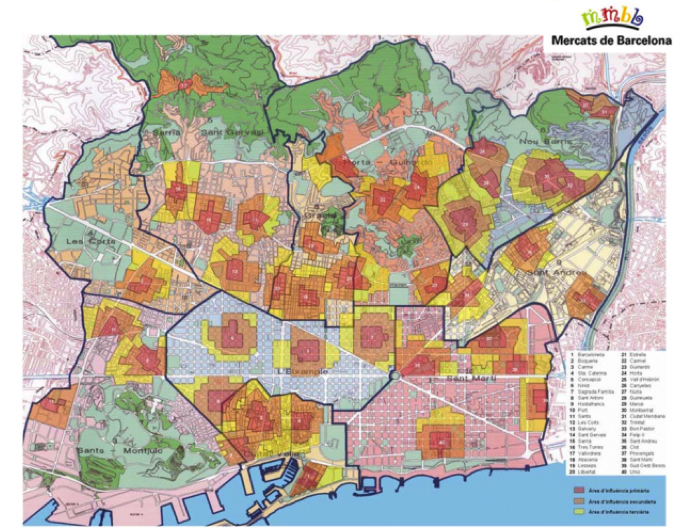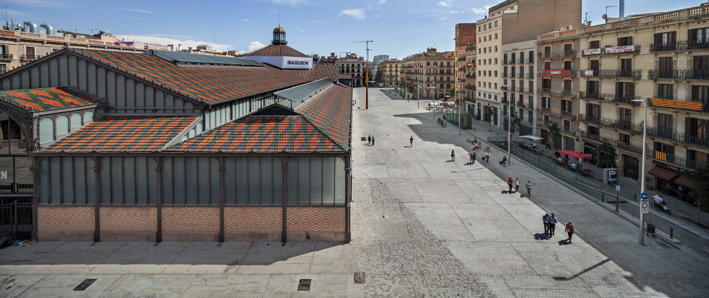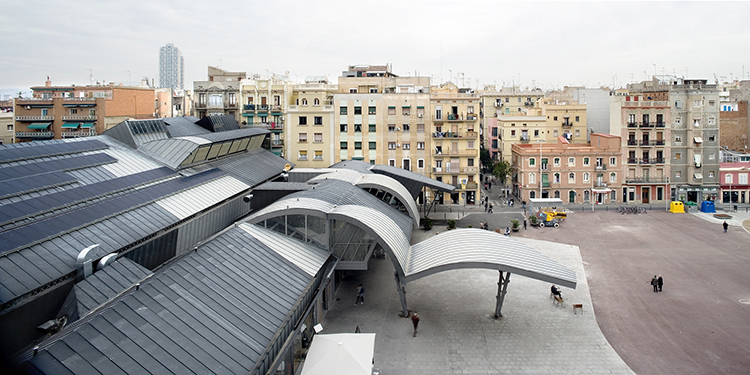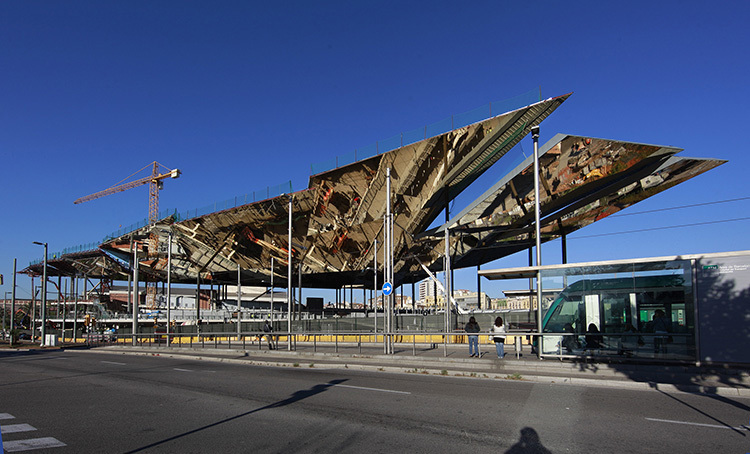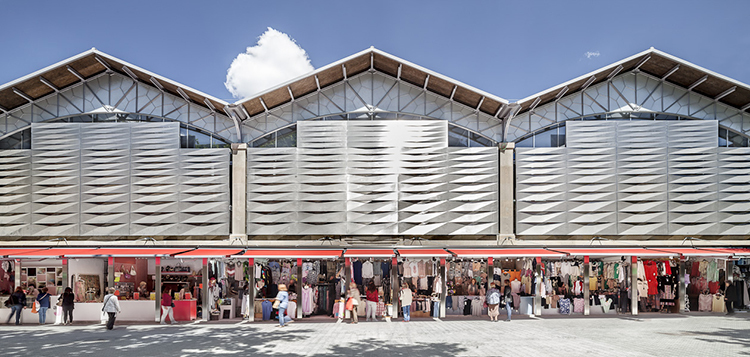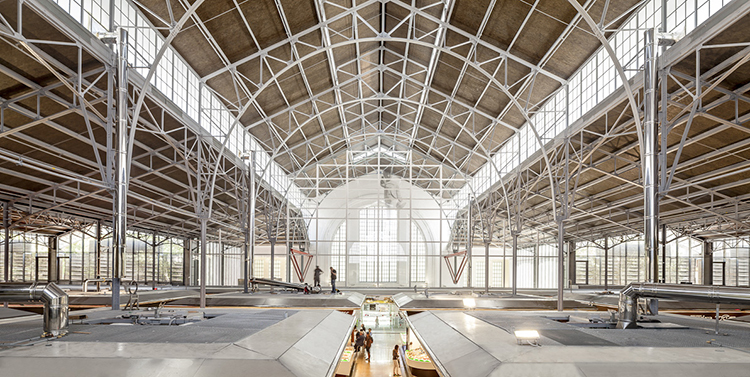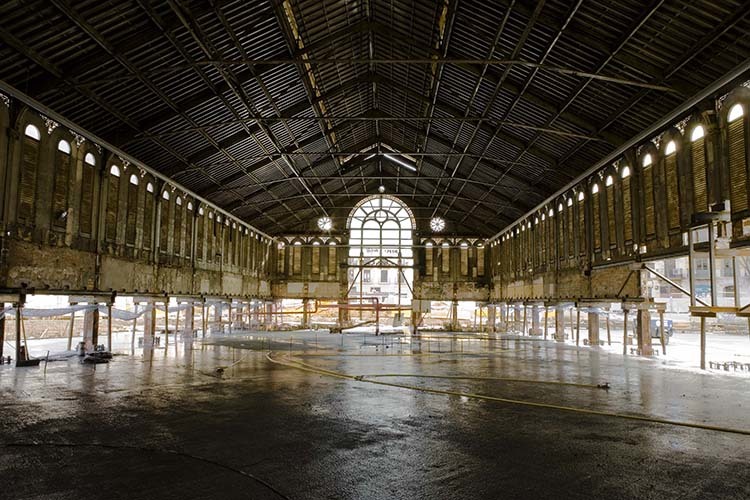The Architecture of Barcelona's Markets
With the recent completion of Josep Lluís Mateo's renovation of the Ninot Market, Antonio La Gioia takes a look at the history of markets in Barcelona and other recent examples of these valuable parts of the Catalan capital.
Indoor markets have played a fundamental role in shaping the city of Barcelona. In the early 19th century, when the first of these pavilions were built, the markets made a significant impact on the configuration of its public spaces and its architectural image. In the last twenty years, the renovation of Barcelona's oldest markets has again been a catalyst in the revival of degraded districts.
Barcelona's first roofed market was Santa Caterina, built in 1844. From the outset, the reference model was the French market, regarded as an urban facility that was just as essential for the city as any other. These markets were therefore designed with four basic requirements in mind: circulation, ventilation, lighting and hygiene.
These considerations led to the success and importance of these structures in Barcelona's planning process, so much so that at the most recent International Public Markets Conference, the U.S. organization Project for Public Spaces selected Barcelona as the best example of the modern market city on account of its network of 43 permanent public markets that connect the rural hinterland of Catalonia's capital with each district, from the center to the periphery.
The importance of these markets for Barcelona's citizens is also reflected in the architecture of these structures. The first covered markets in Barcelona were built at a time when modernist architecture was in its heyday. Born, Llibertat, Galvany, Sants and Sant Antoni markets are outstanding examples of the metal-and-glass architecture of the time. In many cases, their monumental proportions and height made them the most representative buildings in the district.
It could be said that the renovation projects in the last twenty years, in most cases tendered through open competition, are similarly characterized by their high architectural quality. The IMMB (Barcelona Municipal Market Institute) has designed a remodeling standard, the "Barcelona renovation model" with several procedural thrusts:
• Recovery of the architectural value of the building and its artistic elements.
• Redefinition of the business mix.
• Underground location of the market logistics.
• Separate waste collection and an environmental commitment.
• Promotion of the markets in communication campaigns (some markets have a very active profile in the social media).
Since 1991, 39 markets have been renovated along the lines of this model, most notably the projects for the Encants Vells-Fira de Bellcaire Market (B720 Arquitectos), Santa Caterina Market (Enric Miralles), Barceloneta Market (MiAS Architects), Guinardó Market (Bayona Valero Architects Associates), Guineueta Market (Daniel Mòdol Deltell), Llibertat Market (PB2 Llobet-Bach Associats), Les Corts Market (G56), Poblenou Market (Ferran Mur), Provençals Market (Mur-Garganté Arquitectes Associats), Sants Market (PB2 Llobet-Bach Associats) and Sarrià Market (Àgata Vila). New markets have also been built, including the Fort Pienc Market (Josep Llinas) and the Marina Market.
The most recent market to open is the Ninot Market, designed by architect Josep Lluís Mateo. The operation on the existing building has left the original volume intact and retained the support structure for the original roof, while perforated sheet metal panels wrap the volume's walls and regulate the entry of natural light, giving this market a powerfully contemporary image. New services and facilities have been added and new floor space has been gained by excavating beneath the structure.
The interior space is a city precinct, a roofed square with two orthogonal axes, intensely connected to the exterior, the district and its streets. The generous entrance foyer opens onto Calle Mallorca, and the walls are dynamic, integrating public transport stops at street level.
Despite the economic crisis of recent years, public investment in these projects has continued at an intense level. This explains not only the economic, but also the social and urban importance of these structures for the life of the city: according to public opinion polls, these roofed markets are Barcelona's most highly valued public services, after its libraries.
The Vall d'Hebrón Market (BAAS Arquitectura, Jordi Badia), the Abaceria Central Market, the Sant Andreu Market (Daniel Mòdol Deltell), Bon Pastor Market (AA25, SCP) and the Sant Antoni Market (Ravetllat–Ribas) are currently under renovation.
Mercados, constructores de la Barcelona contemporánea, an exhibition organized in collaboration with the Barcelona Contemporary Municipal Archives (AMCB) and the IMMB, explores the role of these structures. This extremely current reality exemplifies the architecture and life of Barcelona. The exhibition is open until the end of the year.
